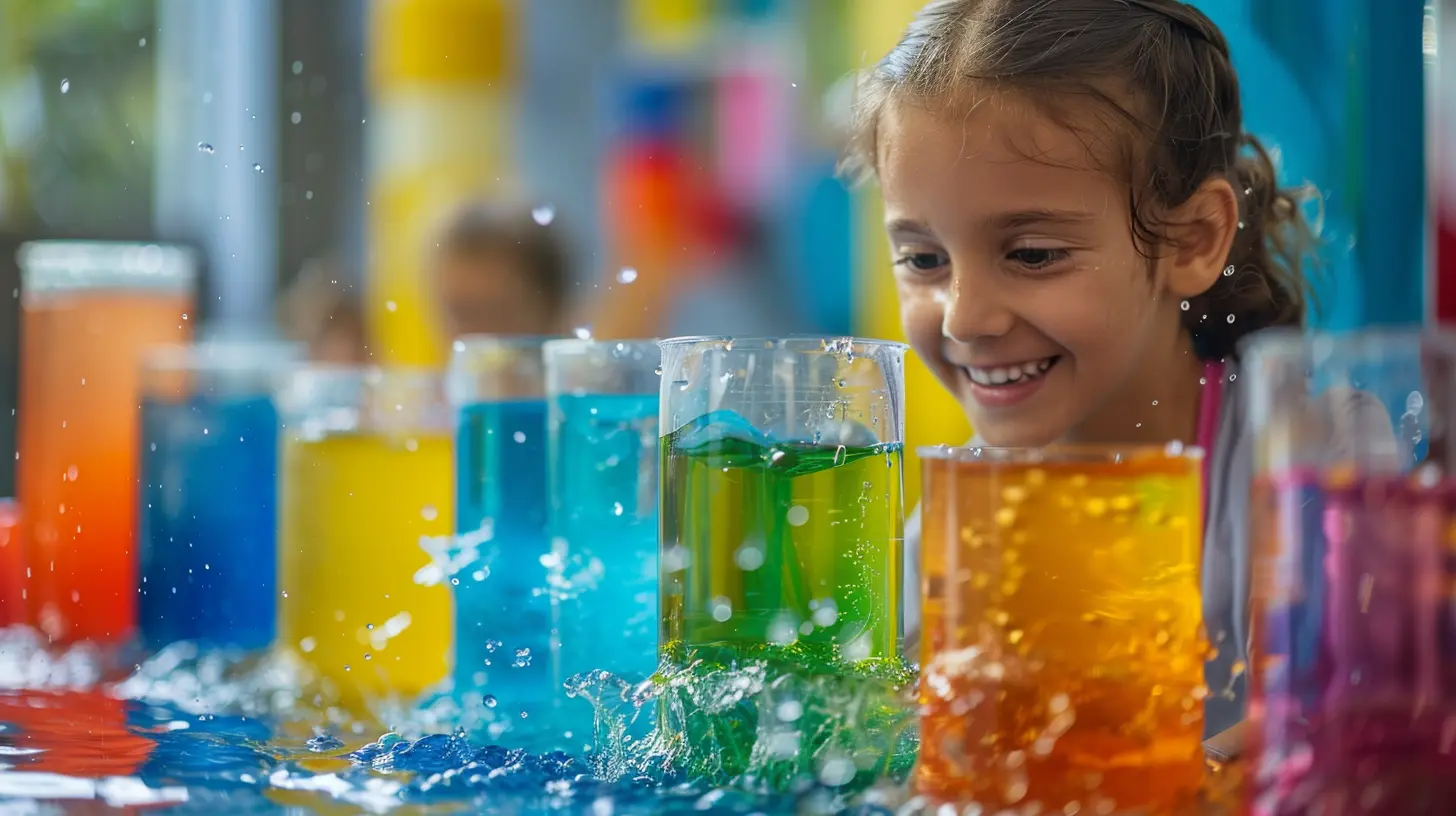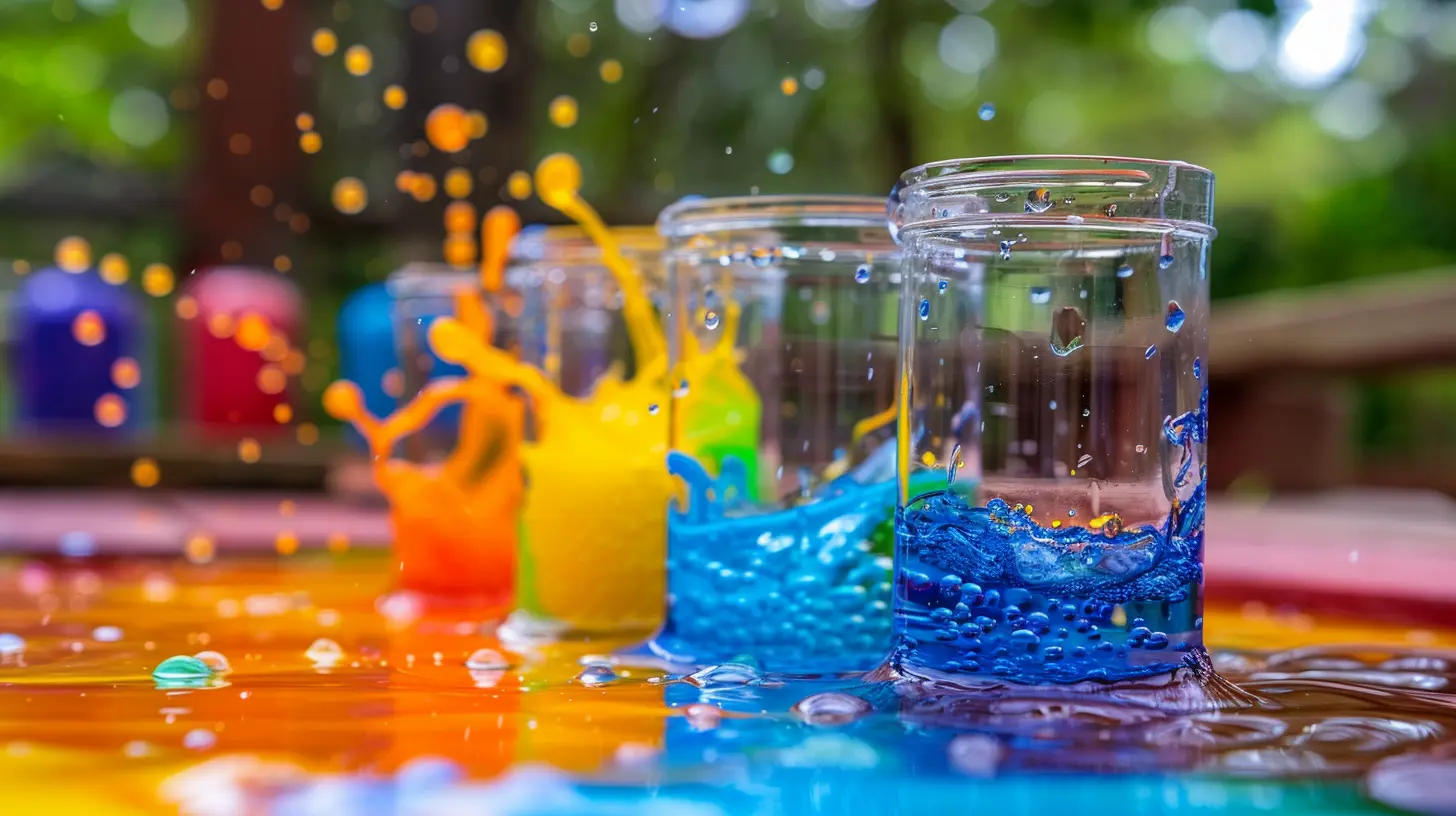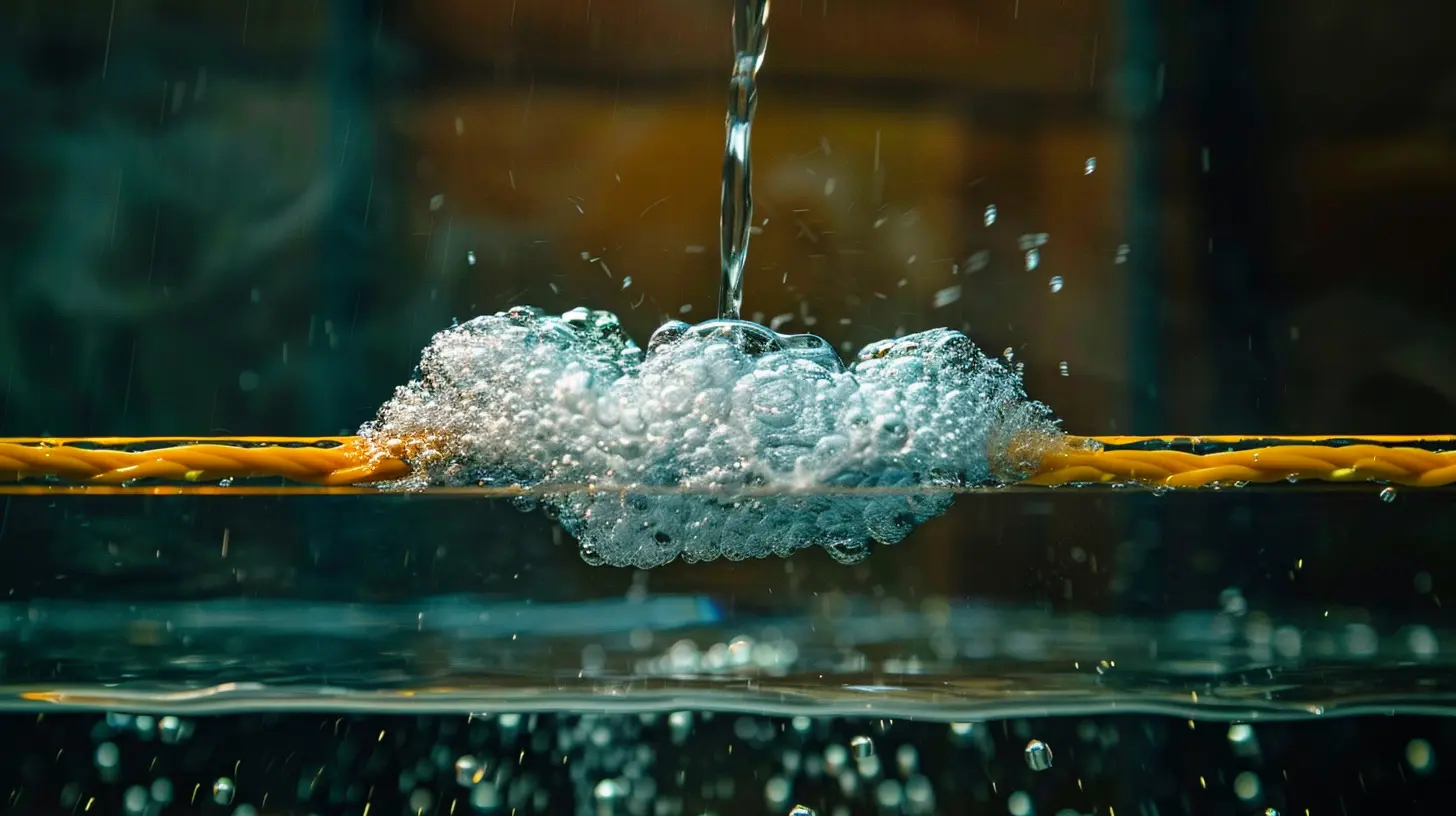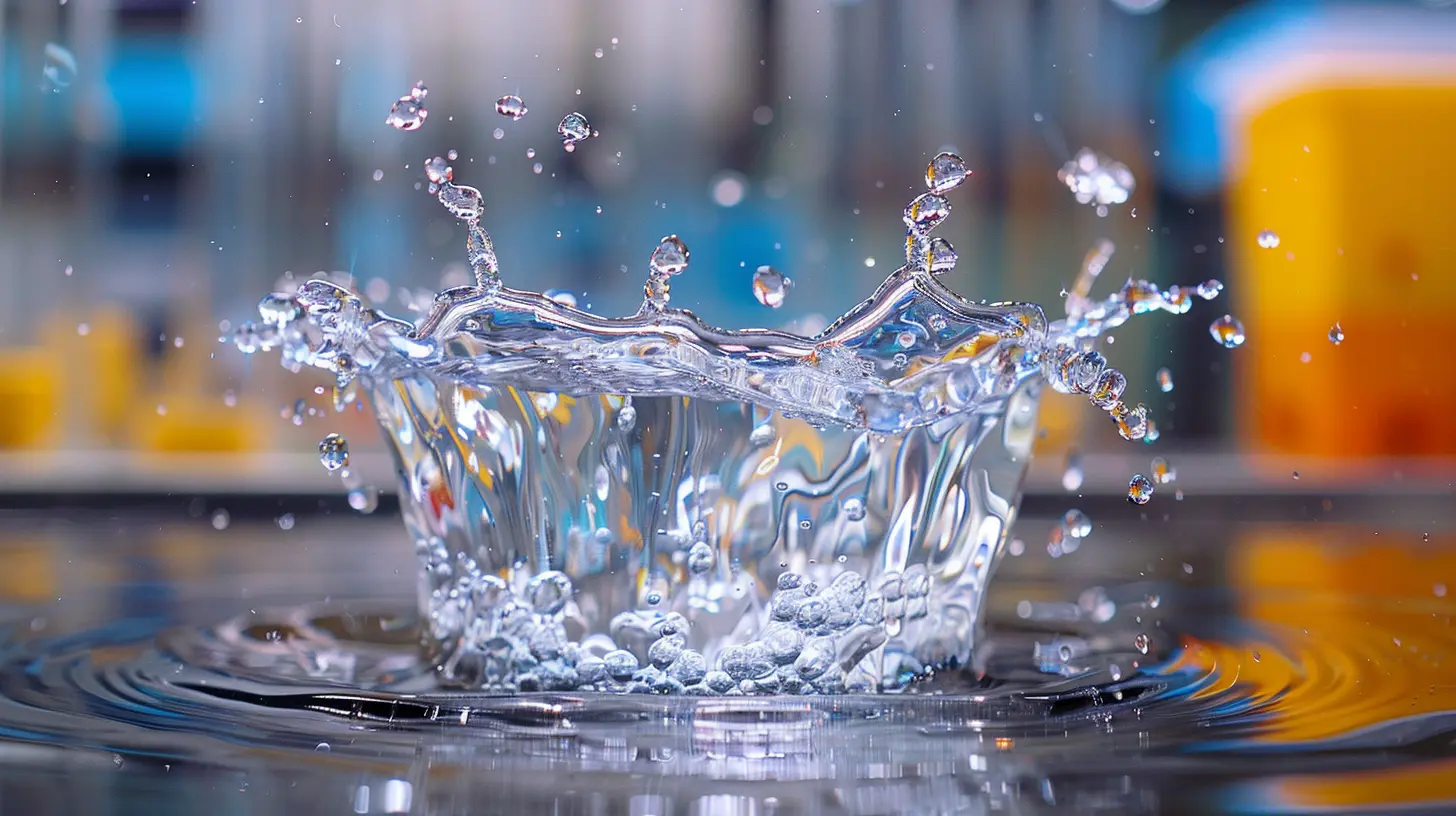The Magic of Water Tension: Fun Experiments to Try at Home
23 September 2025
Water is one of the most fascinating substances on Earth. It sustains life, carves landscapes, and even holds things on its surface—yes, really! This invisible force is called surface tension, and it's responsible for some mind-blowing tricks you can perform right in your own kitchen.
So, what’s so magical about water tension? And how can you test it out for yourself? Let’s dive into some fun, hands-on experiments that will make you see water in a whole new light!

What Is Surface Tension?
Before we get into the experiments, let’s break down the science behind surface tension.Water molecules love to stick together. At the surface, they cling tightly, forming a sort of invisible "skin." This tension is strong enough to support light objects, like a paperclip or even some insects. Ever wondered how water striders walk on water? Thank surface tension!
Now that we know the basics, let’s have some fun with it. Grab some household items, and let’s get experimenting!

1. The Floating Paperclip Experiment
Ever tried to drop a paperclip into a glass of water? It sinks, right? Well, not if you use surface tension to your advantage!What You Need:
- A bowl or glass of water- A paperclip
- A piece of tissue paper (optional)
Instructions:
1. Fill a glass or bowl with water.2. Carefully place a small piece of tissue paper on the water’s surface.
3. Gently set a dry paperclip on top of the tissue.
4. Slowly push the tissue away or let it sink.
What Happens?
The paperclip stays afloat! The water’s surface tension forms an invisible layer strong enough to support its weight. But if you disturb the water or poke the paperclip, it will sink immediately.
2. Pepper and Soap Trick
This experiment is super fun and has a magical twist. It demonstrates how soap breaks surface tension in an instant!What You Need:
- A shallow bowl of water- Ground black pepper
- Dish soap
- A cotton swab or your fingertip
Instructions:
1. Fill a shallow bowl with water.2. Sprinkle black pepper evenly over the surface.
3. Dip your finger or a cotton swab into dish soap.
4. Touch the water’s surface with the soapy finger or swab.
What Happens?
The pepper rushes away from the soap like it’s running for its life! This happens because soap weakens the water’s surface tension, breaking the invisible "skin" and sending the pepper scattering.
3. Walking Water Experiment
This experiment is not just about surface tension; it also demonstrates capillary action, which helps plants pull water from the soil.What You Need:
- 3 small cups or glasses- Water
- Food coloring (blue, red, yellow, or any combination)
- 2 paper towels
Instructions:
1. Fill two of the cups with water (leave the middle one empty).2. Add a few drops of food coloring to each cup of water.
3. Fold two paper towels and place one end in a full cup and the other end in the empty cup.
4. Repeat with the second paper towel.
What Happens?
Over time, the water climbs up the paper towels and travels into the empty cup, eventually mixing and forming new colors! The combination of surface tension and capillary action makes the water "walk" from one cup to another.4. The Magic Coin Trick
Want to see surface tension in action up close? This simple coin trick is a great way to observe how water molecules hold together.What You Need:
- A smooth coin (a penny works best)- Water
- An eyedropper or straw
Instructions:
1. Place a coin on a flat surface.2. Use an eyedropper to slowly add drops of water to the coin.
3. Keep adding drops and observe what happens.
What Happens?
The water forms a dome over the coin instead of spilling over immediately. This happens because of cohesion, where water molecules cling to each other, forming a tiny bubble-like structure. Eventually, too much water builds up, and the surface tension can’t hold it anymore—it spills over!
5. The Dancing Colors Experiment
Let’s add some art to science! This one is visually stunning and shows how surface tension interacts with soap.What You Need:
- A shallow dish- Whole milk (don’t use skim milk—it won’t work as well!)
- Food coloring
- Dish soap
- A cotton swab
Instructions:
1. Pour milk into the dish, just enough to cover the bottom.2. Add a few drops of different food colors around the milk.
3. Dab a cotton swab in dish soap and touch it to the milk’s surface.
What Happens?
The food coloring bursts apart in swirling patterns as the soap spreads, breaking the milk’s surface tension. The fats and proteins in the milk also react, creating a mesmerizing effect.6. Sticky Water Loop
What if I told you that water can hold onto a string like beads on a necklace? Let’s put surface tension to the test with this cool trick.What You Need:
- A bowl of water- A string or thread
- A spoon
- Dish soap
Instructions:
1. Dip the string into the water.2. Carefully lift it out and see how water "sticks" to it.
3. Dip the string in soapy water and try again.
What Happens?
Without soap, the water clings to the string, forming a chain of droplets. But once soap is introduced, the surface tension breaks down, and the water lets go!
Why Does Surface Tension Matter?
Surface tension isn’t just a fun party trick—it plays a crucial role in daily life.- In Nature: It helps insects walk on water and allows trees to pull water from their roots up to their tallest branches.
- In Everyday Life: It’s why water beads on a waxed car and why soap helps clean greasy dishes.
- In Science & Engineering: Surface tension is used in medicine (think about blood tests) and even in space, where water behaves in bizarre ways without gravity!
Final Thoughts
Water might seem ordinary, but it holds some serious scientific magic. With just a few household items, you can see and manipulate surface tension in action. The best part? These experiments are simple, fun, and perfect for kids and adults alike.So, the next time you pour a glass of water, take a moment to appreciate the invisible forces at work. Who knew science could be this cool?
all images in this post were generated using AI tools
Category:
Science ExperimentsAuthor:

Bethany Hudson
Discussion
rate this article
1 comments
Alvin McQuaid
What a delightful article! Exploring the magic of water tension through fun experiments is a fantastic way to spark curiosity and creativity in learners of all ages. I can’t wait to try these experiments at home with my family. Thank you for sharing these engaging and educational activities!
October 12, 2025 at 4:51 AM

Bethany Hudson
Thank you for your kind words! I'm thrilled to hear you're excited to try the experiments with your family. Enjoy the magic of water tension!


